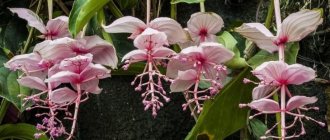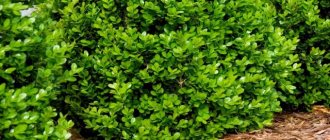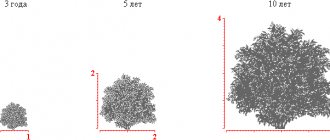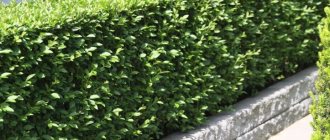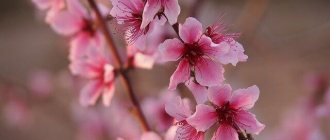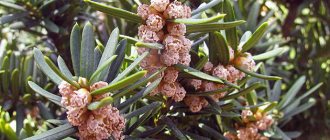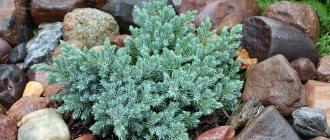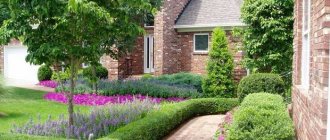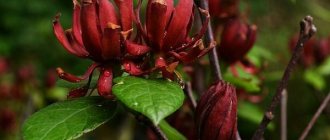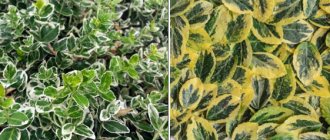Conditions for growing boxwood
Boxwood is a very beautiful, slow-growing evergreen shrub that can brighten up any space. Boxwood grows throughout the world, both in wild and cultivated forms, but most often it can be seen in warm regions. On the territory of Russia, boxwood is common in the Caucasus and Sochi; in the world it grows mainly in tropical zones.
This is due to the fact that the shrub is characterized by increased thermophilicity. In general, boxwood is quite unpretentious, but certain conditions when growing it must be observed.
- The plant does not grow well in poor soils. For boxwood, it is necessary to create nutritious neutral or slightly acidic soil with a high lime content, otherwise the bush will develop poorly and will not be able to achieve maximum decorativeness.
- The shrub does not tolerate direct sunlight. For healthy development, it definitely requires shading, especially in the cold season, since the bright winter sun is very dangerous for the bush.
- The plant is heat-loving, which is what makes breeding difficult in the middle zone. Planting and caring for evergreen boxwood can be done not only in the Moscow region, but even in the Urals and Siberia, but you need to monitor the plant very carefully, otherwise the bush will die from severe cold.
You can decorate almost any area with an evergreen plant, even in the northern regions of the country. However, gardeners need to remember that we are talking about growing a southern plant that has special requirements for conditions.
Main types and varieties
Not a very large number of species of this plant are cultivated, but there are quite spectacular garden forms of boxwood.
Evergreen boxwood (Buxus sempervirens)
In the wild it is found in the Caucasus and the Mediterranean. Most often it grows in the undergrowth of mixed and deciduous forests, and can also be found in heavily shaded places. This tree can reach a height of 15 meters, and there are also shrubby forms. Green, straight, tetrahedral stems are densely leafy. The opposite leaf blades are glossy, bare and have virtually no petioles. Their front side is painted dark green, and the back side is a matte pale green, even slightly yellowish. The elongated elliptical leaves can reach 1.5–3 centimeters in length. Small unisexual light green flowers are part of small capitate inflorescences. The fruit is a small spherical box with valves. They open only after the seeds become ripe. Any part of this plant contains poison. Popular varieties:
- Suffruticosis is an evergreen shrub characterized by slow growth. Vertical shoots reach a height of 100 centimeters. Oppositely located ovate or obovate leaf plates reach 20 millimeters in length. The flowers are small. Used for borders and hedges.
- Blauer Heinz - this low shrub also grows relatively slowly. The stems are more rigid than the previous species, and there are leathery greenish-blue leaf plates. This variety has appeared recently and is used for carpet ornaments whose height is no more than 0.2 meters. It differs from the previous variety in greater frost resistance and compactness.
- Elegance - such a dense shrub has a spherical crown. Straight stems with dense foliage can reach a height of 100 centimeters. The variegated oblong leaf blades have a whitish border. Drought resistant.
Small-leaved boxwood (Buxus microphylla)
It has greater frost resistance compared to the previous type. This Japanese or Korean relative of boxwoods can withstand frost down to minus 30 degrees without shelter. However, in the spring it needs shelter from the sun's rays. Popular varieties:
- Winter Jam is characterized by high frost resistance and rapid growth. Has a dense crown. Used to create small topiary shapes. Pruning does not harm it. It has a height of about 150 centimeters.
- Faulkner is a compact shrub and grows rather slowly. It has a height of up to 150 centimeters. As a rule, bushes are pruned giving it a spherical shape, which is due to the growth of its crown.
Colchian or Caucasian boxwood (Buxus colchica)
A relic of the Tertiary period with slow growth. Of all the European species, it is the most frost-resistant and has small leaves. This species can live up to 600 years, while its height reaches 15–20 meters. At the base, the trunk has a thirty-centimeter diameter.
Balearic boxwood (Buxus balearica)
It is considered the most western species of these plants. Its homeland is southern Spain, the Balearic Islands, Portugal and the Atlas Mountains in northern Morocco. In the Euro-Asian range, this species has the largest leaf blades. So, the width of its leaves is about 3 centimeters, and the length is 4 centimeters. Fast growing and very effective. It is thermophilic and not winter-hardy.
Other species suitable for cultivation in mid-latitudes exist, but they enjoy very little popularity.
When to plant boxwood in open ground
Evergreen boxwood is a very early flowering plant - small flowers appear on its branches as early as early March. Therefore, for the most part, in the middle zone it is practiced to plant boxwood in the fall; seedlings are placed in open ground in mid-September or early October, about a month before the first frost.
It takes about 4 weeks for the boxwood root system to develop in a new location in open ground. After this, with proper care, the shrub calmly endures the winter and delights with flowering at the beginning of spring.
Attention! Spring and summer planting for shrubs is also acceptable; it is usually used in cold regions where frosts occur very early. In particular, planting boxwood in spring or summer is recommended for Siberia, given that frosts in the region can begin in mid-September; with late planting, boxwood often does not have time to take root.
How to plant boxwood
Its further growth and decorative properties largely depend on the correct planting of the shrub. When planting a plant in the ground, it is necessary to take into account the requirements of the shrub for soil, lighting and proximity to other garden crops.
Where to plant boxwood
The boxwood shrub is a heat-loving plant, but it does not tolerate direct sun. It is recommended to select a site for the shrub that is shaded or at least slightly shaded so that the sun's rays do not damage the leaves of the plant.
Boxwood feels good in the shade of buildings and fences, close to taller plants that provide shade for it. It is important to select a location so that maximum shading is provided in winter, when the sun is especially bright and dangerous to the health of the bush.
What kind of soil does boxwood like?
The evergreen shrub does not place very high demands on the saturation of the soil with nutrients. However, it is still recommended to comply with a number of conditions.
- Loamy or sandy loam soils with moderate moisture levels are ideal for the plant. But the plant does not tolerate heavy soils with stagnant moisture.
- The acidity of the soil for boxwood should be neutral or slightly acidic; the plant does not develop well in soils that are too acidic. It is useful to add slaked lime or mature compost to the soil at the site where the shrub is planted; they will improve the composition of the soil and help create optimal conditions for the evergreen plant.
- The shrub does not like waterlogging. It needs to be planted in an area near which surface groundwater does not flow.
- The soil where the shrub is planted should be well-drained and aerated. If the soil does not meet these requirements, it can be improved by organizing artificial drainage using perlite, broken brick or stone. It is also useful to loosen the soil under the bush trunk more often.
The shrub belongs to the category of long-livers and can grow in one place for tens and hundreds of years. Therefore, you need to be very careful when choosing a site and soil for boxwood, so that later the grown shrub does not have to be moved to another place.
At what distance to plant boxwood?
Typically, evergreen shrubs are planted not alone, but in groups - in the form of a hedge, a low border or a carpet composition. In order for individual plants to develop freely and not interfere with each other, it is necessary to maintain a distance between the bushes, it should be at least 30 cm.
How to plant boxwood correctly
The algorithm for planting shrubs is quite simple, but during preparation you need to adhere to certain rules.
- The planting pit for the shrub is prepared in advance. If the soil on the site is not suitable for growing boxwood, it must first be improved, dug up and mixed with perlite in equal proportions.
- The depth and width of the planting hole should be approximately three times the size of the roots of the seedling along with the earthen ball.
- A small layer of perlite is poured onto the bottom of the dug hole - about 2-3 cm. Earth mixed with perlite is poured halfway into the hole.
- A day before planting in the ground, the shrub seedling must be moistened. To do this, it can be removed from the container, cleared of soil and placed in water, or watered properly directly in the container so that the soil around the root system is saturated with moisture.
Directly planting an evergreen shrub looks like this:
- a boxwood seedling is lowered into a hole half covered with earth, with or without an earthen lump, carefully straightening the roots of the plant;
- holding the boxwood, fill the planting hole to the top with earth mixed with perlite; the soil must be poured gradually, making sure that there are no voids left in the hole;
- After the hole is filled to the top, the soil near the boxwood trunk is lightly compacted and watered properly; at least 3 liters of water must be added.
After watering, the soil near the bush trunk will settle a little, and then you will need to add a little more substrate into the resulting hole. There is no need to compact the soil this time. Wet soil can be sprinkled with a small layer of perlite; it will improve water absorption and prevent its premature evaporation.
What to plant next to boxwood
The shrub looks especially impressive in group plantings, so it is often used when creating artistic compositions. Successful neighbors for boxwood are flowering shrubs, namely:
- lilac and jasmine;
- cistus and spray roses;
- heuchera and barberry;
- other crops with similar requirements for growing conditions.
The deep shade of the shrub pairs best with red, white, yellow and pink flowering plants, with evergreen boxwood providing a nice contrast.
If the shrub is planted near an artificial or natural reservoir, then it can be combined with marigold, calamus, and lily plants. The shrub will also successfully highlight their flowering, and after the leaves fall, it will help preserve the decorative and attractiveness of the coastal zone.
Important! The shrub not only looks beautiful in group plantings, but also provides neighboring plants with protection from wind, dust and pests.
Creating a hedge
A favorable time for planting can be safely called the period from the beginning of April to the end of October. To do this, experienced gardeners use a boxwood hedge planting scheme. But the way in which this will be done is not as important as the fact that the plants must take root, get used to the climate and take root before the first frost occurs. It is desirable that the soil is non-acidic, loose and nutritious. It is imperative that there is compost in the soil, and that the place for the future fence has drainage and is not swampy.
If the area is completely shaded or completely sunny, this will only provoke slow growth, and in the worst case, death of the plant. This plant loves partial shade, but cannot tolerate drafts. If it so happens that you bought seedlings in winter, you can bury them or leave them in a container until spring.
Planting a bush for a hedge does not require special skills, but there are still some nuances:
- Install pegs around the perimeter of the separated area.
- Dig a trench where the hedge will be installed.
- If the soil is clayey, add a little humus, peat, sand and a mixture of earth to it.
- Remove the seedlings from the pot. If the roots seem dry, soak them in water for 24 hours before planting.
- Spread the roots one by one and place them on the bottom.
- Sprinkle well with soil and tamp down.
- The seedlings should be well watered for the first week.
- It is necessary to carry out mulching using crushed tree bark (preferably coniferous) or agrofibre.
- If you look at a photo of a boxwood hedge, you will notice that plants are planted in a checkerboard pattern and done at a distance of 0.2 meters. But it is permissible to plant in a continuous line so that the hedge is denser.
How to care for boxwood
After planting, the shrub needs to be provided with quality care. In general, caring for boxwood in the garden does not cause gardeners any particular problems; increased attention needs to be paid to the plant only with the onset of autumn, in preparation for the winter cold.
Watering boxwood
The ornamental shrub needs additional watering, but remains very sensitive to waterlogging. It is important not to allow moisture to stagnate - in damp weather with heavy rains, there is no need to water the shrub; natural precipitation will suffice.
For the first time, boxwood is watered immediately after planting. If a week later there is no rain, watering needs to be done again - for a meter-long seedling you need to add about 10 liters of water. You need to water the bush carefully, making sure that the water does not spread over the ground too widely; it should fall under the trunk of the bush and be deeply absorbed, going to its roots.
In the future, the shrub is watered as the soil dries; you need to especially carefully monitor the soil at the roots of the boxwood in dry weather. During the hottest months, it is recommended to water the plant once a week. If the soil dries out quickly, you can increase the amount of water when watering, but you should not increase the frequency. Since the roots of boxwood are quite long, it can take moisture from the deep layers of the soil for a long time, while excessively frequent watering leads to waterlogging of the soil.
You need to water the bush in the morning, before the bright sun comes to the area, or after sunset. From time to time, it is recommended to thoroughly spray the shrub with water from above to wash away dust and dirt from the leaves of the plant.
Top dressing
Planting and caring for buxus arborescence, or boxwood, includes fertilizing; it ensures fast and healthy growth of the evergreen shrub. As a rule, fertilizers are first applied to the soil only a month after planting, after the seedling has taken root properly. If wood ash or compost was added to the planting hole during autumn planting, fertilizing can be postponed until spring - the boxwood will not need additional nutrients before that.
In the future, the bush will need to be fed several times a season. In the spring, it is useful to add nitrogenous fertilizers to the soil, which will contribute to the growth of green mass of the plant. In the fall, during the last loosening of the soil, the shrub is fed with potassium and phosphorus, but nitrogen is not required, as it can provoke untimely vegetative processes.
Mulching and loosening
Stagnant moisture is detrimental to evergreen boxwood, so loosening and mulching the soil for it must be carried out without fail. It is customary to loosen the soil immediately after watering - this will allow the water to be better absorbed and at the same time saturate the soil with oxygen.
Mulching of boxwood is carried out in the spring at the beginning of May. After the soil has warmed up well under the sun, it is sprinkled with a 5-8 cm layer of peat. To prevent mulching from damaging the boxwood, you need to ensure that the peat does not come into contact with its young shoots or directly with the trunk.
Trimming
Planting and caring for boxwood shrubs involves regular pruning. Haircuts for evergreen boxwood can fall into two categories:
- sanitary;
- decorative
The first is mandatory every spring - in April or early May. During this process, all dried, broken and diseased branches are removed from the plant - this avoids the appearance of fungi and pests.
Decorative pruning of the plant is carried out as needed. The shrub tolerates pruning well, so it can be trimmed frequently, but this is usually done once every few months. Decorative pruning is most often aimed at maintaining the curly shape of the roots, so that the bush retains its outline, it is necessary to trim young shoots.
Using pruning, you can give the boxwood a standard shape. To do this, all the lower shoots of the plant are radically cut off, leaving only the central trunk, and the upper branches are trimmed so that the crown takes the shape of a ball.
Advice! The more often pruning is carried out, the more often it is recommended to feed the shrub; fertilizers will help it endure the pruning and regain strength without harm to its health.
Protection from diseases and pests
Like any plant, boxwood remains vulnerable to some diseases and insect pests. Of the fungal diseases, the most dangerous for shrubs are:
- shoot necrosis - the tips of the plant’s branches die off, and the leaves become covered with unsightly dark spots;
- cancer - the disease is expressed in a change in the color of the foliage and its drying out;
- rust - with this disease, boxwood leaves become covered with bright orange spots and then die.
In all cases, treatment of boxwood should be carried out using fungicidal solutions, for example, Fundazol. In order for the treatment to bring results, all affected parts of the bush must be removed and burned, while the cut areas are treated with copper sulfate to avoid rotting. The best prevention of fungal diseases is high-quality sanitary care of the bush - the plant must be trimmed annually, removing all broken and dry branches, and keep the soil clean near the roots.
Among the pests, the most dangerous for boxwood are the boxwood moth, spider mite, boxwood flea and feltworm. To prevent the appearance and reproduction of these insects, it is necessary to preventively treat the bush with insecticides - Karbofos, Aktara, Tagore. Treatment should begin in early spring when warm weather sets in; spraying can be repeated in mid-summer.
Preparing for winter
The winter period is the most difficult for the heat-loving boxwood, and with the onset of autumn, the gardener needs to pay special attention to the shrub.
Before the first frost arrives, it is necessary to water the plant abundantly one last time before wintering. After this, the soil under the trunk is covered in a circle with a mulch layer.
With the onset of frost below - 10 ° C, boxwood will need to be properly covered. The bush is tightly wrapped in non-woven material or covered with spruce branches, the edges of the covering material are fixed with stakes. Before covering the branches of the plant, it is recommended to tie them so that heavy snow does not break the shoots.
It is also necessary to pay attention to caring for boxwood in the spring - the cover will need to be removed immediately after the onset of a permanent thaw, since boxwood can become stubborn in the heat. To remove the covering material, choose a cloudy day.
Possible diseases and pests
Due to the fact that the leaves of the bush contain alkaloids, this often saves boxwood from diseases and pest damage. The main species that attack evergreen plants are:
Boxwood gall midge or fly , which affects the leaves of the bush. Even in winter, the larvae do not die, but continue to parasitize the plant. They get inside the boxwood leaf and create a swelling in the form of a small blister. The leaf begins to die. To save boxwood from this fly, it is necessary to treat it with special preparations.
- The felt plant is a lover of boxwood plants. It affects not only the crown and leaves, but also young shoots. The plant must be treated, and damaged bushes or parts thereof are usually burned to prevent the disease from spreading further.
- Spider mite - settles on the buxus in the hot summer and infects the leaves. To avoid this, the bush must be sprayed with fufanon or neoron.
Features of planting and caring for boxwood in different regions
Modern agrotechnical methods make it possible to grow southern shrubs in almost all regions of the country - from the Moscow region to Siberia and the Far East. But when growing shrubs in the northern regions, it is necessary to take into account the climate.
- Many gardeners mistakenly believe that the winters of central Russia do not pose a danger to boxwood. This is fundamentally wrong, since even in the Moscow region the temperature in winter can drop significantly below - 20 °C. Boxwood in the Moscow region definitely needs shelter for the winter.
- Planting and caring for boxwood in the Leningrad region requires special attention to the level of soil moisture. Humidity in the Leningrad region is high, so watering shrubs needs to be done less frequently than in dry and hot regions of the country.
- When planting boxwood in Siberia and the Urals, you should first of all worry about the plant’s safe wintering; the shrub here needs careful covering. With the onset of spring, the shelter should not be removed immediately, but only after the final warmth has been established.
Important! When planting shrubs in Siberia and the Urals, it is necessary to take into account the specific climate - autumn frosts occur earlier here than in other regions. You need to choose the planting time so that there is at least a month left before the cold weather.
How to grow boxwood at home
An interesting feature of boxwood is that the shrub is suitable for growing in tubs and containers at home. Boxwood grows very slowly, but looks very attractive in the interior - it can be kept both indoors and on balconies, terraces and loggias.
In fact, caring for boxwood at home is not much different from growing shrubs in open ground.
- Boxwood still requires well-drained, slightly acidic or neutral soil, abundant watering without stagnant moisture, and periodic feeding from spring to autumn.
- In the summer, indoor boxwood can be placed on the balcony or outside, the main thing is to remember that it needs to be shaded from direct sunlight.
- In winter, it is best to keep the shrub in a cool room with a temperature of about 16 °C.
- The soil should be moistened from time to time throughout the winter, but boxwood does not need abundant frequent watering during this period.
An evergreen plant is ideal for growing indoors, since in this case the owner no longer has to worry about the difficult wintering of the plant.
African plant in the vastness of Russia
Boxwood, or buxus, comes from the African continent. This is a long-lived evergreen plant. Such a tree can be safely planted on a plot and passed on by inheritance for 500 years. It grows not only in gardens and personal plots, but also in the natural environment. There are three most popular and largest types of boxwood:
- Central American.
- African.
- Eurasian.
Buxus is one of the oldest ornamental plants on the planet. There is very little of it left in the natural environment, as people barbarously cut down and destroy everything in their path. More recently, this culture was listed in the Red Book on the territory of the Russian Federation. Previously, boxwood was a medicine, a talisman against the evil eye, and a decoration for parks.
The evergreen plant attracts attention all year round. The leaves, juicy and dense, are shaped like a circle or an ellipse. Boxwood grows in height and width, although very slowly. If you pick the leaves and crush them tightly in your hand, you can smell the aroma. The flowers that cover the plant also smell pleasant. Inside each flower there is a fruit, shaped like a box. Once ripe, the fruit cracks and scatters black seeds everywhere.
This plant is a honey plant, but it is strictly forbidden to eat such honey. There are many varieties of this plant, and each is unique in its own way.
Boxwood propagation
To increase the boxwood population on your site, it is not necessary to purchase expensive bush seedlings. You can propagate the plant yourself; there are several simple ways to do this.
- Cuttings. Shoots for propagation are harvested from July until autumn; the cuttings are kept for a day in a solution that stimulates root growth, and then transferred to a container or pot with standard neutral or slightly acidic soil. Cuttings are grown at room temperature in a shaded place; on average, the rooting process takes 1-2 months.
- Seed propagation. Fresh boxwood seeds, just out of the box, are soaked in a growth stimulator for a day, and then germinated in damp gauze for another month. After the seedlings appear, the seeds are sown in a container filled with a sand-peat mixture, covered with film or glass, and green sprouts are waited for another 15-20 days. Strong seedlings are transferred to open ground no earlier than spring, after warm weather has finally established itself.
- Reproduction by layering. If the lower shoots of the boxwood are located close to the ground, you can simply bend one of them, make a small cut on the surface of the stem and deepen it into the ground, securing the shoot so that it does not straighten. Care for the planted cuttings is carried out in the same way as for the main shrub; during the season, the cuttings should give strong roots. For the first winter, it is better to leave it next to the mother plant.
Of all the methods of propagating boxwood, the simplest and most effective is propagation by cuttings; even novice gardeners can cope with it without any problems.
